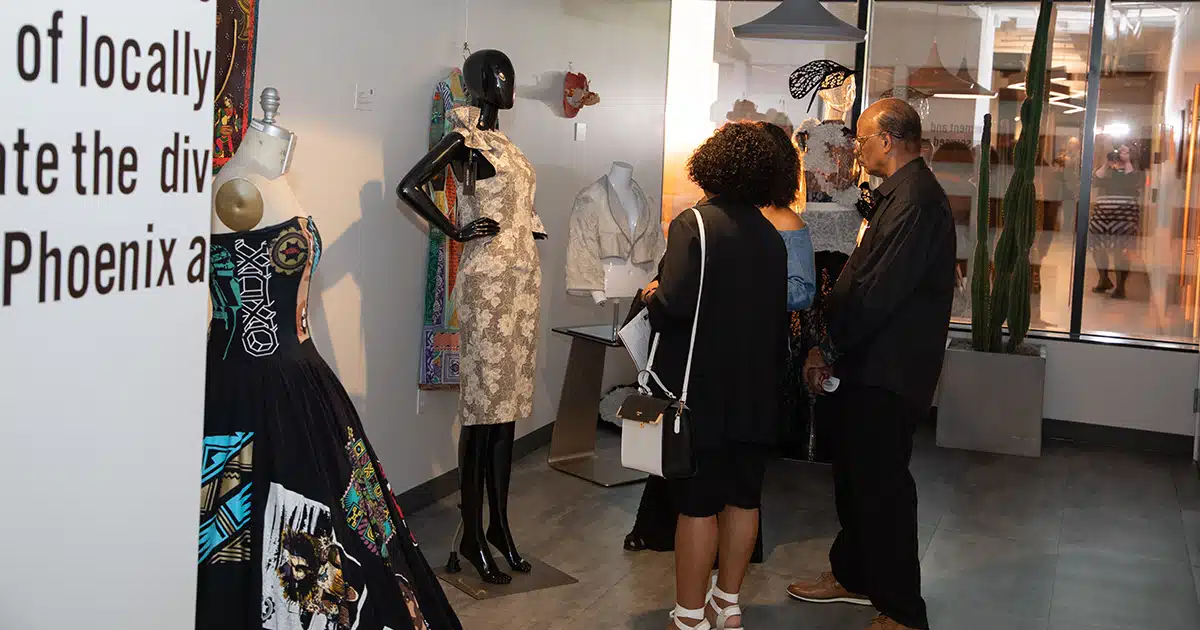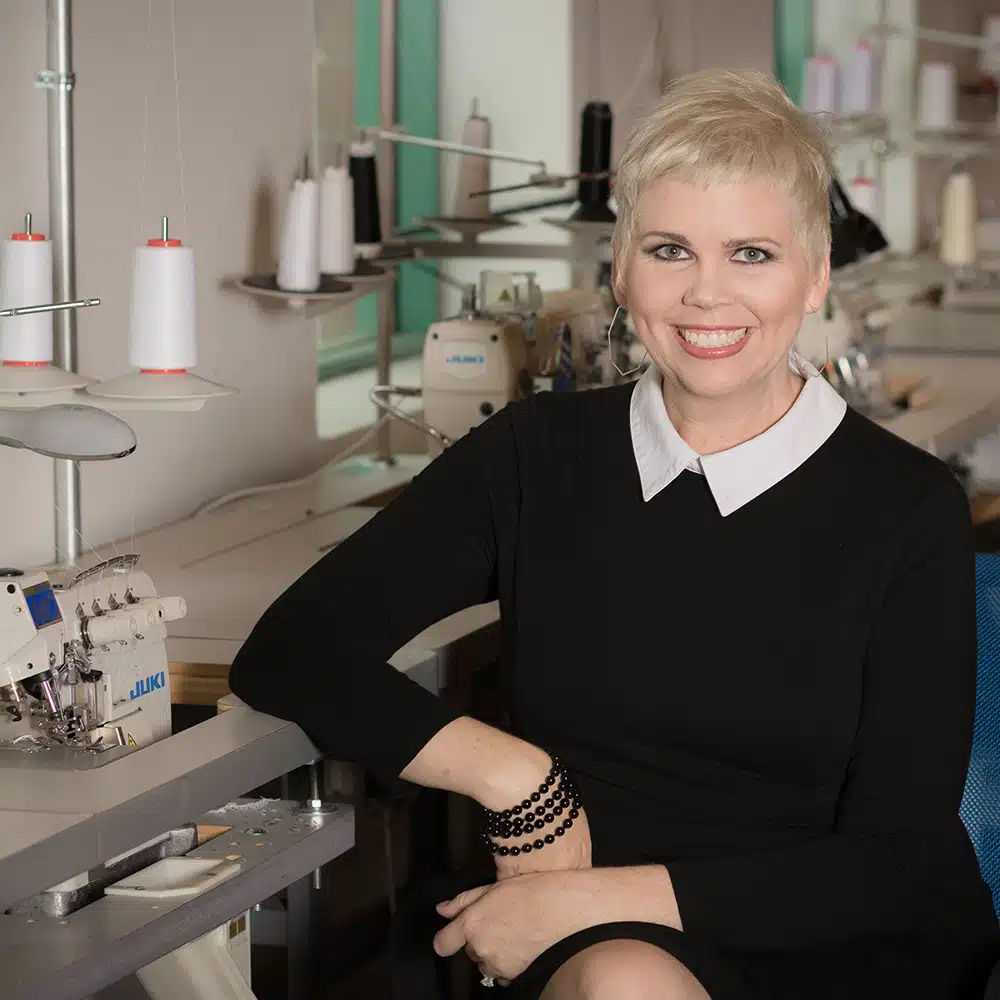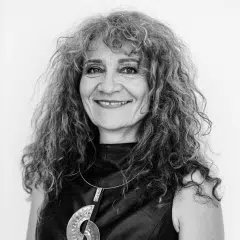

Ambassador Event: Greater Phoenix Color, Cloth & Culture art exhibit opening
Published: 11/17/2025
Updated: 11/18/2025
GPEC’s art opening featured an international designer, sustainable fashion incubator co-founder and XICO leader
In Greater Phoenix, fashion goes beyond arts and culture by advancing community, economy and health.
That’s shown in recent innovations, like Arizona State University (ASU) students leading development of clothing that helped soothe children undergoing chemotherapy. It was clear during the COVID-19 pandemic, when nonprofit FABRIC manufacture tens of thousands of reusable medical gowns in response to the emergency shortage of personal protective equipment.
Initiatives like these reveal the impact of fashion beyond the naked eye. This was at the center of the Greater Phoenix Economic Council’s (GPEC) opening for its new Greater Phoenix: Color, Cloth & Culture art exhibit where a panel of local leaders spoke about the impact of fashion and arts in the community. The panel consisted of:
- Angela Johnson, Co-Founder, FABRIC
- Galina Mihaleva, Founder, Future Fashion LOOM.01; Associate Professor, ASU FIDM
- Ricardo Lopez Valencia, President, Board of Directors, Xico Inc.; Founder & Partner, Luna Valencia Strategy Group
- Stefanie Carson, Art Director, Greater Phoenix Economic Council (Moderator)
“The arts are not an accessory to economic growth; they are an engine of it,” Lopez Valencia said. “Every thriving economy, from local corridors to global markets, is built on creativity.”
Implementing new technology into fashion
FABRIC was launched by Johnson and Sherri Barry in 2016 to improve sustainability within the fashion industry. The duo was concerned by the cycle of overproduction and overconsumption, dominated by large brands relying on overseas manufacturing.
“Fashion is so unsustainable, and we have so much excess on the planet … so we need to figure out how to reuse all of these pieces,” said Johnson, a fifth-generation Arizonan.
The Greater Phoenix ecosystem, driven by innovation and advanced technology, is a conduit for this type of development and the tools that drive it.
FABRIC serves as an incubator that has helped thousands of brands across the nation manufacture small batches domestically. The nonprofit launched the first net-zero sustainability accelerator alongside EcoStance and embraces AI in the development process to limit overproduction, using software for virtual models that depict fit, color and print and to collect orders pre-production to minimize waste. The incubator also offers a digital passport tool that shows the origin, materials, ownership history and manufacturing process of their garment, helping customers verify authenticity and build brand loyalty.
“When you can empower a small brand to be able to make things locally, to me, that’s the answer,” Johnson said.
Mihaleva has long incorporated technology into her fashion artistry. The designer, who has appeared in galleries across five continents including Tiffany’s Paris Fashion Week, WOW in New Zealand and the International Music Awards in New York, has a dress called Tranquility featured in the GPEC art exhibit.
“This dress is dedicated to noise pollution,” she said, explaining that sensors were incorporated to detect noise pollution in cities including Phoenix, Singapore, Paris, and Sofia, Bulgaria, the capital of her birth country. “The dress reacts to noise pollution and intensity by leading different shades of light.”
Her work led her to her associate professor position at ASU, where her class developed wearable technology that helps children undergoing chemotherapy. One such project was a colorful jacket that measures heart rate, designed with kids in mind using a butterfly-shaped sensor that activated when a child’s heart rate got too high, allowing the patient to breathe at the pace of the flapping wings.
“The children diagnosed with cancer during chemo had difficult experiences, so the students from the ASU fashion program learned empathy, and the engineers became softer, and together we created the incredible collection of different pieces of little adaptive clothing,” Mihaleva said.
Supporting the industry
XICO is one of the longest-standing Latino arts organizations in the United States, focused on promoting Latino and indigenous culture over the last 50 years.
“XICO reminds us that culture and arts are a foundational component of our economy,” Lopez Valencia said. “When you invest in art, and specifically when you invest in indigenous and Latino art, you’re supporting creativity while strengthening the very identify of the region that we are part of.”
The organization hosts classes and workshops, has a working studio available for independent production, offers community spaces for companies and organizations, and holds engagement opportunities.
“Our artists are small business owners, educators, innovators, and part of the creative economy that fuels the region,” Lopez Valencia said.
The organization’s working studio includes a 3D printer, laser engraver, lithopress and etching press, offering accessibility to tools often difficult for individuals to acquire. The work and advocacy spreads outside its doors and into the region through activations such as its collaboration with Downtown Phoenix Inc. to bring la lotería and a scavenger hunt-style art event to the district.
XICO has an inaugural exhibition at its new headquarters at The Arizona Center on Nov. 21.
The focus on sustainability and the significance of arts and fashion within the economy is a center of GPEC’s newest art exhibit. With a nod to Phoenix Fashion Week in October, the Greater Phoenix: Color, Cloth & Culture exhibit showcases the artistry, innovation and beauty that local creatives exhibit every day.
Meet the panel
Angela Johnson
Co-Founder
FABRIC
Galina Mihaleva
Founder, Future Fashion LOOM.01
Associate Professor, ASU FIDM
Ricardo Lopez Valencia
President, Board of Directors, Xico Inc.
Founder & Partner, Luna Valencia Strategy Group
Stefanie Carson (Moderator)
Art Director
Greater Phoenix Economic Council




